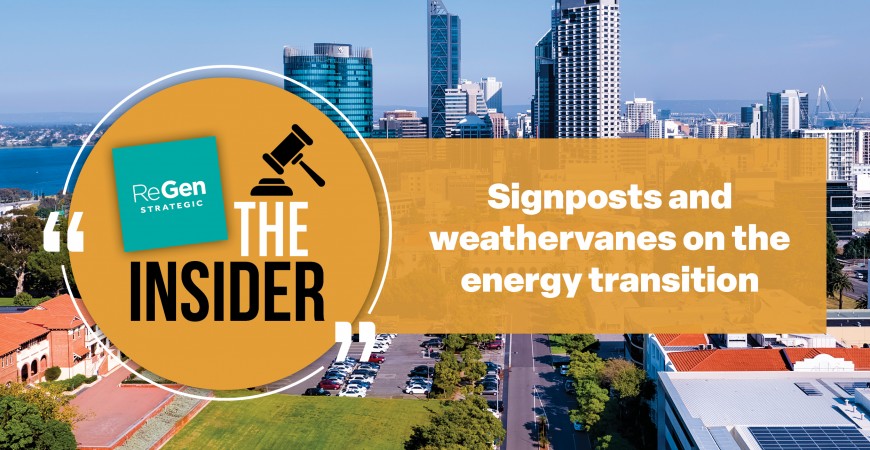Fabled UK Labour Party luminary Tony Benn divided politicians into two categories - Signposts and Weathervanes.
Signposts were those that stuck to their direction over the long-term. Weathervanes were frenetically busy, but constantly spinning and being pushed around by the prevailing short-term sentiment.
It's a useful analogy for the energy transition in WA, with clear policy settings from both the Albanese Labor Government and the Cook Labor Government aiming to induce a decisively different economy for the coming decades.
While we are now out of a formal election cycle (at least on the Australian mainland), there is still the continued culture war commentary seeking to tear down renewable energy.
But the undeniable momentum of renewable energy generation into the SWIS is about as clear a signpost as you can find presently, with the share of renewable energy generation continuing to expand as utility-scale storage becomes a reality.
There may be bickering and muttering from the extremes of the political spectrum – too much risk from intermittency or too much ongoing reliance on gas as peaking generation - but this is becoming a sideshow when compared to the past decade of bitter policy roadblocks and personalised criticism of decision-makers.
What might be overlooked is the political reality of the significant majorities held by Labor Government in both Canberra and WA, which provide a generational opportunity to progress and see the benefits of truly nation-building projects.
Proponents that intend to develop - whether this is a mine, downstream processing or a renewable energy project - should seek to set a strategy that aligns with these long-term objectives.
Capital markets, supply chain and workforce shortages will be tested, however these issues are not insurmountable with private capital. As ReGen Strategic has noted before, governments are also clearly willing to examine the ‘goldilocks’ amount of funding that can assist with commercialising the innovative solutions required for WA’s energy transition.
The recent release of a draft community benefit guideline by Energy Policy WA is a clear signal of intent that in progressing the energy transition, local communities, particularly across regional WA, need to recognised as bearing a heavier load.
The necessary transmission corridors, industrial land development and visual impacts are a long-term reality that suburban residents are unlikely to encounter. The shorter-term impacts on housing, supply chains and localised workforces are similarly shouldered by regional communities disproportionately.
The draft community benefit guideline broaches the topic of compensation, expressed as a calculation per megawatt, which is bound to raise eyebrows irrespective of location or project size.
The cavalcade of renewable energy projects proposed across WA are likely to require a more nuanced consideration of benefit, inclusive but not limited to compensation.
One reason alone would be the scales of magnitude between the impacts from a standalone battery system on a portion of a property and position to avoid visual impact, and a large-scale renewable hydrogen project that would warrant bioregional assessment given the sprawling upstream generation footprint.
Coming back to the analogy, the sensible proponents (signposts) will seek to party and collaborate with their respective communities and tailor a community benefit program according to current needs and future aspirations. Proponents that view their project investment purely as a transaction (weathervanes) are likely to overlook the opportunities that emerge from early and genuine engagement.
Local government also has a responsibility to facilitate and guide suitable investment. The allure of politicising a project can prove tempting in the lead-up to an election, but the energy transition provides an opportunity that won’t be repeated in our lifetimes.
The sensible local government and elected representatives (signposts) should recognise the substantial investment and intent behind energy policy presently (e.g. the $584 million allocated to expand the Clean Energy Link – North).
The local governments that might be left in the wake (weathervanes) are those that pull up the drawbridges as development opportunities emerge, which provides a short-term sugar hit for keen observers of council meetings but does nothing for the long-term sustainability of those regional areas.
As the energy transition continues to gather pace and become more defined, proponents and stakeholders need to respectively consider the role they want to play and how this can provide a long-term benefit.
 ReGen Strategic
ReGen Strategic